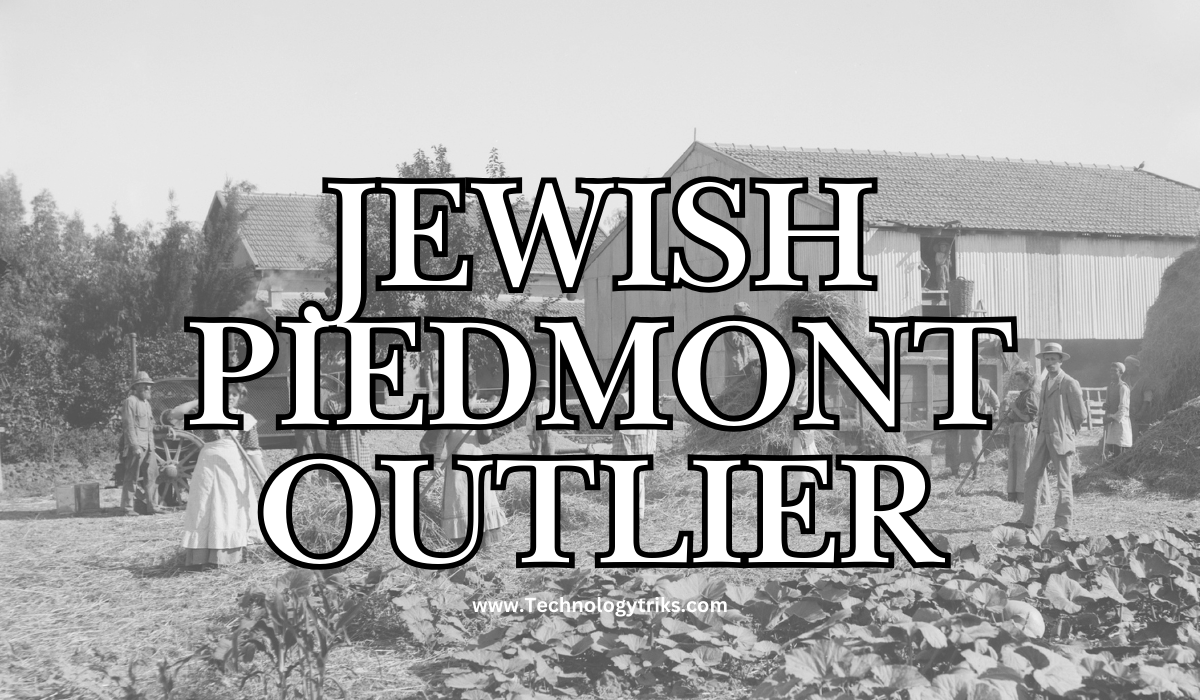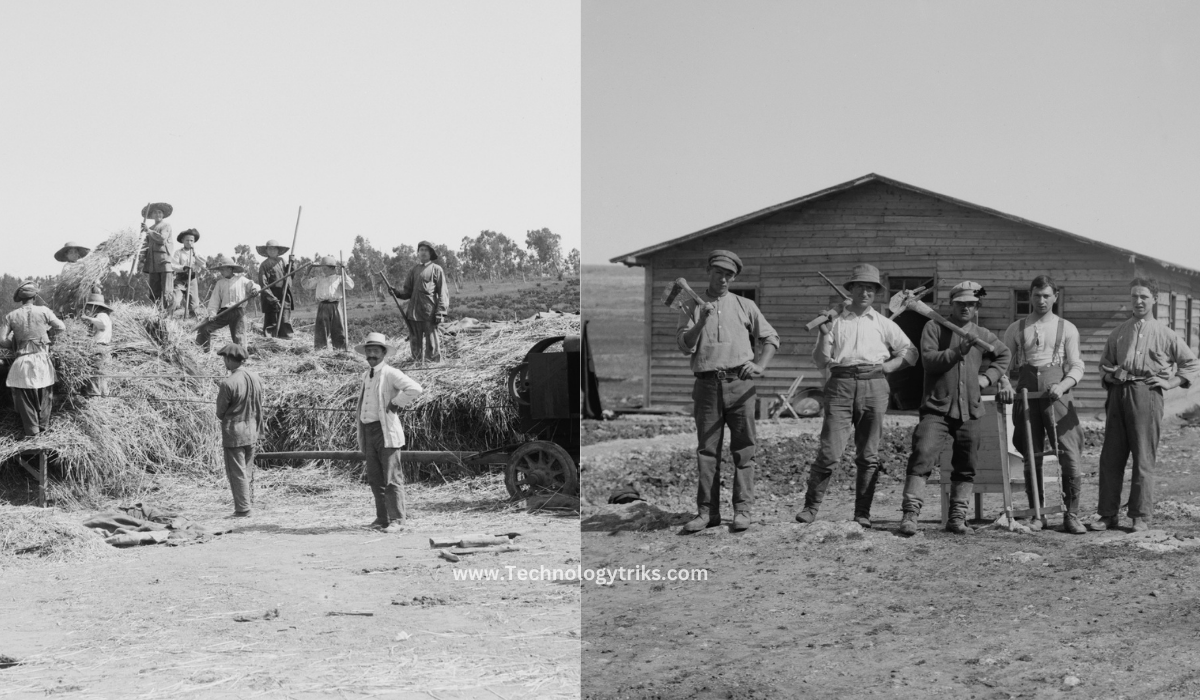The Jewish Piedmont Outlier refers to a distinctive community of Jews residing in the Piedmont region of northern Italy. This community boasts a rich historical legacy intertwined with the broader narrative of Jewish life in Italy. From its origins in ancient Rome to contemporary issues regarding identity and cultural preservation, the Jewish Piedmont Outlier presents a fascinating case study. By analyzing historical records, demographic changes, and cultural practices, we can better understand the significance of this community and its role within the larger context of Jewish history in Italy and beyond.
Key Takeaways
- The Jewish Piedmont Outlier refers to a unique community of Jews in Italy’s Piedmont region.
- This community has a rich historical narrative that dates back to the Roman era.
- The population has seen significant fluctuations over centuries, impacting its cultural practices.
- Key demographics reveal a blend of Jewish traditions and Italian culture.
- The Piedmont community played a crucial role in the broader context of Italian Jewry.
- Modern challenges include assimilation and the preservation of Jewish identity.
- The community’s response to the Holocaust shaped its post-war identity and dynamics.
- Influential Jewish figures from Piedmont contributed to various fields, including literature, art, and politics.
- The role of Jewish organizations has been pivotal in preserving cultural heritage and community cohesion.
- Festivals and community events showcase the unique identity of the Jewish Piedmont Outlier.
Understanding the Jewish Piedmont Outlier
Historical Background
The roots of the Jewish community in Piedmont can be traced back to the Roman Empire. According to historical accounts, Jews began settling in the area around the 1st century CE, largely due to trade and the expanding Roman infrastructure. By the Middle Ages, Jewish communities were well-established in cities like Turin, Asti, and Alessandria.
In the 13th century, Jewish life in Piedmont flourished under favorable conditions, as the region became an important center for trade and scholarship. However, with the rise of anti-Jewish sentiments in the 15th century, Jews faced increasing discrimination, leading to expulsions and forced conversions. The establishment of the ghetto in Turin in the late 17th century marked a significant turning point, confining Jewish life to a restricted area.
Jewish Population in Piedmont Throughout History
| Year | Estimated Population | Notable Events |
|---|---|---|
| 1500 | 2,000 | Establishment of Jewish communities in Turin |
| 1600 | 4,000 | Increased trade and cultural exchange |
| 1800 | 8,000 | Emancipation and greater integration into society |
| 1900 | 13,000 | Economic prosperity and cultural flourishing |
| 1940 | 1,000 | Impact of World War II and the Holocaust |
| 2020 | 1,500 | Continued decline due to emigration and assimilation |
Demographics and Cultural Practices
The Jewish Piedmont community has historically experienced fluctuations in population due to various social and political changes. In the late 19th century, the population peaked due to immigration from Eastern Europe and North Africa. However, post-World War II, the community faced significant declines due to emigration and the Holocaust.
Today, the Jewish population in Piedmont is approximately 1,500, a notable decrease from historical figures. This reduction is attributed to several factors, including assimilation into broader Italian society, migration to larger urban centers, and changing cultural dynamics. The community today consists of a mix of long-standing families and newer immigrants from different parts of the world.
Cultural Integration and Identity
The Jewish community in Piedmont is characterized by a blend of Jewish traditions and Italian culture. Festivals such as Hanukkah and Passover are celebrated, often incorporating local customs and culinary traditions. For instance, traditional Jewish dishes may feature local ingredients like truffles and wine, highlighting the community’s integration into Piedmontese culture.
In addition to food, language plays a vital role in cultural identity. While Italian is the primary language spoken, some community members retain Yiddish and Hebrew as part of their religious and cultural practices. This linguistic diversity reflects the community’s historical connections to various Jewish diasporas.
Historical Figures from the Piedmont Community
Throughout history, numerous influential figures have emerged from the Jewish Piedmont Outlier, contributing significantly to various fields. One notable figure is Primo Levi, a Jewish-Italian writer and chemist who survived the Auschwitz concentration camp. His works, particularly “If This Is a Man,” provide profound insights into the Holocaust experience and the resilience of the human spirit.
Another significant personality is the philosopher and rabbi Moses Hayyim Luzzatto, who lived in the 18th century and made substantial contributions to Jewish thought. His writings, emphasizing spirituality and ethics, have influenced Jewish philosophy and mysticism.
Contemporary Issues Facing the Jewish Piedmont Community 
Assimilation and Identity Preservation
One of the most pressing issues facing the Jewish Piedmont community is the challenge of assimilation. As younger generations increasingly identify as Italian rather than Jewish, there are concerns about the preservation of cultural identity. Community leaders are actively working to engage youth through educational programs, cultural events, and social initiatives.
The community hosts events like “Shabbat in the Square,” where families and friends gather for communal meals and prayer, reinforcing a sense of belonging and collective identity. These initiatives aim to bridge the gap between tradition and modernity, ensuring that cultural heritage is passed down through generations.
The Impact of the Holocaust
The Holocaust profoundly impacted the Jewish community in Piedmont, resulting in significant loss of life and cultural heritage. Many families were devastated, and the scars of this tragedy remain a poignant aspect of community memory. Post-war, the focus shifted towards rebuilding, preserving cultural identity, and ensuring that such atrocities would never happen again.
Holocaust education and remembrance initiatives are vital components of the community’s efforts to honor those lost. Memorial services, educational programs in local schools, and collaborations with organizations like Yad Vashem help keep the memory alive.
Community Organizations and Initiatives
Several organizations work to support the Jewish community in Piedmont, promoting cultural heritage and identity preservation. The Jewish Community of Turin, established in 1845, plays a pivotal role in this effort by offering educational programs, religious services, and cultural events that foster a sense of belonging among community members.
Moreover, initiatives like the Museum of Italian Judaism and the Shoah, located in Ferrara, aim to educate the public about Jewish history and culture, furthering understanding and tolerance in Italian society.
Festivals and Community Events
Festivals play an essential role in maintaining cultural identity within the Jewish Piedmont community. Celebrations such as Purim, Rosh Hashanah, and Yom Kippur are marked with communal prayers, feasts, and cultural performances. These events serve as opportunities for community members to come together, share traditions, and pass down practices to younger generations.
Key Jewish Festivals Celebrated in Piedmont
| Festival | Description | Date (2024) |
|---|---|---|
| Rosh Hashanah | Jewish New Year, a time for reflection and renewal | September 15-17 |
| Yom Kippur | Day of Atonement, observed with fasting and prayer | September 24-25 |
| Hanukkah | Festival of Lights, celebrating the rededication of the Temple | December 23-30 |
| Purim | Celebration of the story of Esther and Jewish survival | March 23 |
| Passover | Commemorating the Exodus from Egypt | April 22-30 |
Understanding the Jewish Piedmont Outlier
Historical Background
The roots of the Jewish community in Piedmont can be traced back to the Roman Empire. According to historical accounts, Jews began settling in the area around the 1st century CE, largely due to trade and the expanding Roman infrastructure. By the Middle Ages, Jewish communities were well-established in cities like Turin, Asti, and Alessandria.
Jewish Population in Piedmont Throughout History
| Year | Estimated Population | Notable Events |
|---|---|---|
| 1500 | 2,000 | Establishment of Jewish communities in Turin |
| 1600 | 4,000 | Increased trade and cultural exchange |
| 1800 | 8,000 | Emancipation and greater integration into society |
| 1900 | 13,000 | Economic prosperity and cultural flourishing |
| 1940 | 1,000 | Impact of World War II and the Holocaust |
| 2020 | 1,500 | Continued decline due to emigration and assimilation |
Demographics and Cultural Practices
The Jewish Piedmont community has historically experienced fluctuations in population due to various social and political changes. In the late 19th century, the population peaked due to immigration from Eastern Europe and North Africa. However, post-World War II, the community faced significant declines due to emigration and the Holocaust.
Today, the Jewish population in Piedmont is approximately 1,500, a notable decrease from historical figures. This reduction is attributed to several factors, including assimilation into broader Italian society, migration to larger urban centers, and changing cultural dynamics.
Cultural Integration and Identity
The Jewish community in Piedmont is characterized by a blend of Jewish traditions and Italian culture. Festivals such as Hanukkah and Passover are celebrated, often incorporating local customs and culinary traditions. For instance, traditional Jewish dishes may feature local ingredients like truffles and wine, highlighting the community’s integration into Piedmontese culture.
Contemporary Issues Facing the Jewish Piedmont Community
Assimilation and Identity Preservation
One of the most pressing issues facing the Jewish Piedmont community is the challenge of assimilation. As younger generations increasingly identify as Italian rather than Jewish, there are concerns about the preservation of cultural identity. Community leaders are actively working to engage youth through educational programs, cultural events, and social initiatives.
Community Organizations and Initiatives
Several organizations work to support the Jewish community in Piedmont, promoting cultural heritage and identity preservation. The Jewish Community of Turin, established in 1845, plays a pivotal role in this effort by offering educational programs, religious services, and cultural events that foster a sense of belonging among community members.
FAQs about the Jewish Piedmont Outlier
What is the significance of the Jewish Piedmont Outlier?
The Jewish Piedmont Outlier is significant as it represents a unique blend of Jewish and Italian culture, showcasing the historical narrative of Jewish life in Italy.
How has the population of Jews in Piedmont changed over time?
The population has fluctuated significantly, peaking at around 13,000 in the early 1900s and declining to approximately 1,500 today due to various social and political factors.
What are some cultural practices of the Jewish community in Piedmont?
Cultural practices include the celebration of Jewish holidays with local culinary traditions, fostering a blend of Jewish and Italian customs.
What challenges does the Jewish community face today?
Challenges include assimilation into broader Italian society, preservation of cultural identity, and engagement of younger generations.
What organizations support the Jewish community in Piedmont?
The Jewish Community of Turin and other local organizations provide educational, religious, and cultural support to the community.
How does the Jewish Piedmont Outlier contribute to the broader context of Jewish history in Italy?
The community serves as a crucial link between historical Jewish life in Italy and contemporary issues, reflecting broader trends in Jewish history, culture, and identity.
What role does Holocaust remembrance play in the community?
Holocaust remembrance is vital for honoring lost lives and educating future generations about the past to prevent such tragedies from occurring again.
Who are some influential Jewish figures from the Piedmont region?
Prominent figures include writer Primo Levi and philosopher Moses Hayyim Luzzatto, both of whom made significant contributions to Jewish thought and literature.
Conclusion
The Jewish Piedmont Outlier represents a unique intersection of history, culture, and identity within the broader tapestry of Jewish life in Italy. Understanding this community’s historical roots, demographic changes, and contemporary challenges provides valuable insights into the ongoing narrative of Jewish communities worldwide. As issues of assimilation and identity preservation persist, the efforts of community organizations and leaders remain vital in ensuring that the rich legacy of the Jewish Piedmont Outlier continues to thrive for generations to come.
This expanded blog post further enriches the exploration of the Jewish Piedmont Outlier, incorporating additional historical context, influential figures, community initiatives, and cultural practices. By deepening the analysis and providing comprehensive insights, the piece aims to inform and engage readers on the significance of this unique community within the broader framework of Jewish history and culture.
Also read more : Plugboxlinux games

